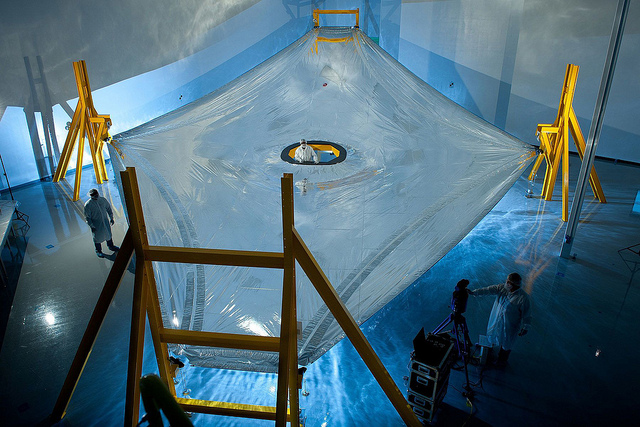
I have to admit that as a graduate student I didn’t ask a lot of questions when I was learning a new protocol. If someone was showing me, I just followed them around and made notes in my notebook. Notes like, “use the membrane in the fourth drawer down next to the chemical hood. In big white box.”
This worked great for me until I moved to a new lab and was dumb-struck by the choice of membranes they had in their drawer: nitrocellulose and polyvinylidene difluoride (PVDF) membranes from multiple different manufacturer’s. I called back to my old lab and found out that I usually use PVDF membranes for Western blots. But it was kind of embarrassing that I didn’t know what I had been using all those years and I made it my mission to find out the difference between nitrocellulose and PVDF membranes.
So to save you a dime (er, cell phone minutes) I am sharing what I learned.
Nitrocellulose membranes
Nitrocellulose matrix membranes were one of the first membranes to be used in Western blotting and remain highly popular. Nitrocellulose is widely-used because of its ability to instantaneously and nearly irreversibly bind protein. It has a binding capacity of 80–100 µg/cm2.
In contrast to PVDF, nitrocellulose is easily wetted prior to setting up the transfer. Many researchers also find that nitrocellulose has lower background and is easier to block.
And if you are working with chicken antibodies, you better use nitrocellulose; PVDF membranes bind chicken antibodies resulting in high background.
So what are the problems with nitrocellulose?
For starters, nitrocellulose is notoriously fragile. Fragments can break off if you handle the membrane roughly. When I used to do Southern blots, I remember my nitrocelluose membrane looking like something out of a Jaws movie; my forceps would cause triangular shaped cuts along the edges of the membrane.
Traditional nitrocelluose does not stand up to stripping and reprobing. If you like to get a lot out of your membrane, then you’ll need to buy “supported nitrocellulose”, which gives the membrane added resilience.
Nitrocellulose is also not the membrane of choice when using fluorescent antibodies; nitrocellulose can give high fluorescent background.
PVDF
PVDF membranes are hydrophobic membranes that bind protein with a higher capacity than nitrocellulose (~150 to160 µg/cm2 ), leading to greater sensitivity.
PVDF membranes are popular because they are highly resilient to mechanical and chemical damage. Therefore, they can be stripped and reprobed without damaging the membrane. They are also ideal for N-terminal sequencing.
If you require SDS in your transfer buffer, then choose a PVDF membrane for blotting; SDS can inhibit binding of proteins to membranes, especially to nitrocellulose.
PVDF is compatible with fluorescent Westerns; in particular newer, low-fluorescence PVDF membranes have very little autofluorescence.
Why doesn’t everyone use PVDF?
In general, PVDF is more expensive than nitrocellulose membranes and might be cost prohibitive.
Because PVDF is hydrophobic, it requires an activation step prior to use. The membrane must be soaked in 100% methanol prior to equilibration in transfer buffer. Improper wetting of the membrane can inhibit binding of proteins and result in uneven Western blots or failure to detect the protein of interest. It can take some time to remember to get your membrane ready before your gel is done running.
A note about pore size
Blotting membranes, nitrocellulose in particular, are sold in 2 different pore sizes. The most widely used is the 0.45µm pore which is used for proteins greater than 20kDa. For smaller proteins, try using membranes with the 0.2µm pore size. Some people also recommend using the smaller pore size if your protein is at low levels in your sample or when quantifying protein amounts.
As with many things in science, these are general guidelines. Every protein is different; you should optimize your blotting procedures, including the choice of membrane.

Leave a Reply